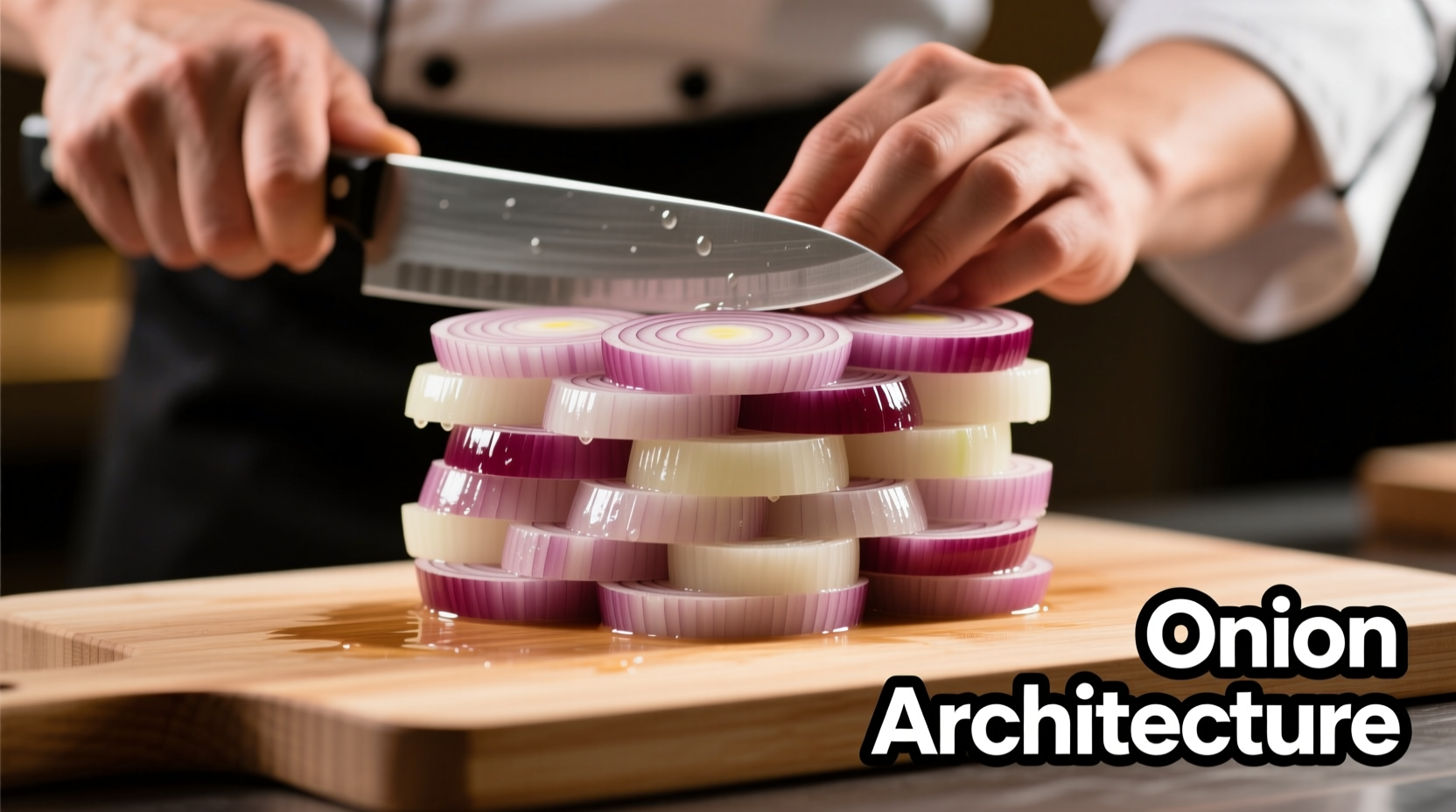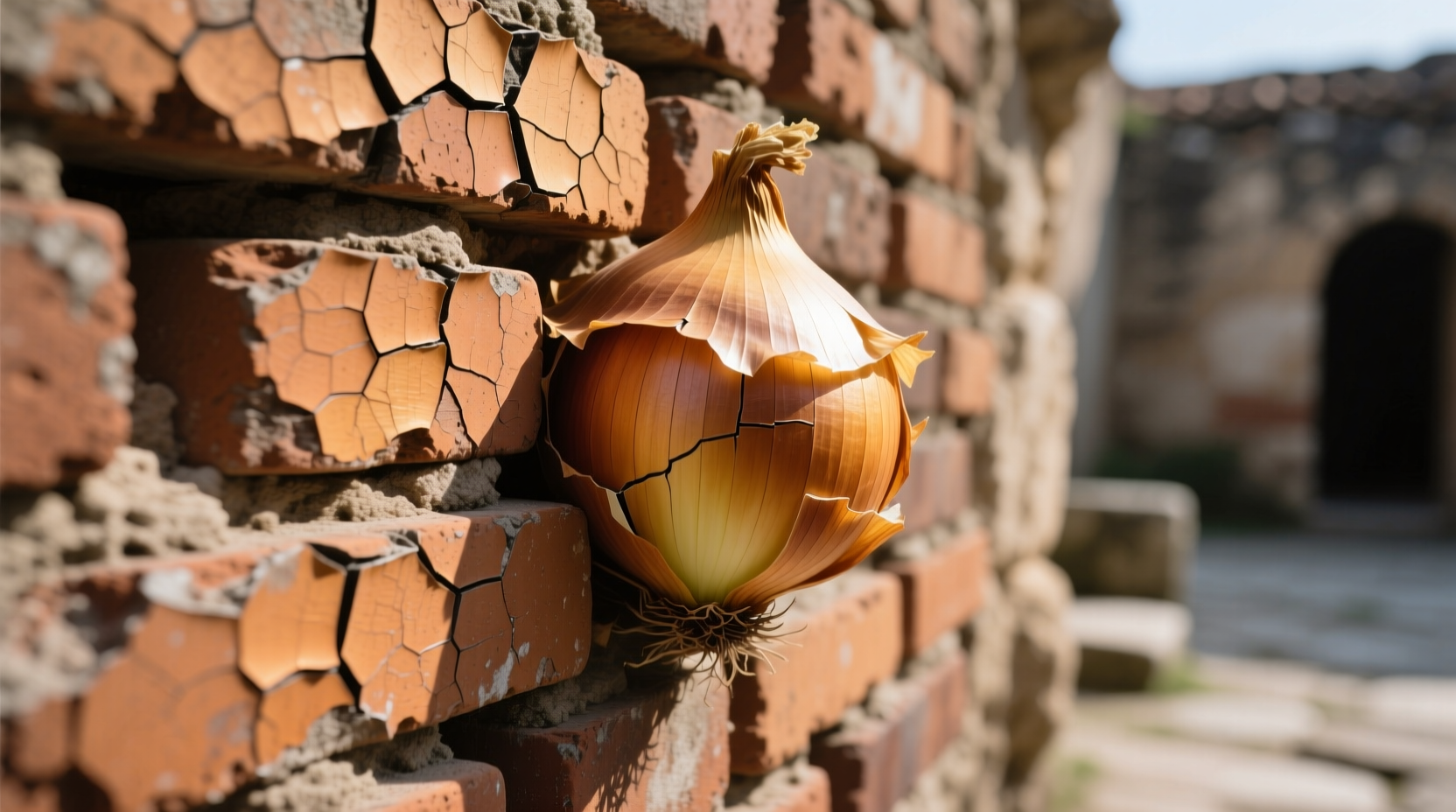Professional chefs and home cooks alike use this simple yet effective method to transform ordinary roasts into restaurant-quality dishes. Unlike traditional racks that can create uneven cooking surfaces, an onion brick provides stable elevation while simultaneously infusing your meat with subtle sweetness and aroma as the onions caramelize during cooking.
Why Chefs Prefer Onion Bricks Over Metal Racks
When roasting meats, especially fatty cuts like brisket or pork shoulder, proper elevation is crucial for even cooking. Metal racks often create hot spots and don't contribute flavor. An onion brick solves both problems by creating a natural, flavorful platform that:
- Allows air circulation underneath the meat for even browning
- Prevents steaming that occurs when meat sits directly in its own juices
- Creates a natural basting effect as rendered fats drip onto the onions
- Adds subtle sweetness and complexity to the cooking environment
- Eliminates the need for additional cooking equipment
| Cooking Support Method | Heat Circulation | Flavor Contribution | Stability | Cleanup Difficulty |
|---|---|---|---|---|
| Metal Rack | Good | None | Variable (can shift) | Moderate (greasy) |
| Onion Brick | Excellent | Significant (sweet, aromatic) | High (when properly packed) | Easy (vegetable scraps) |
| Direct Pan Contact | Poor | Negative (burnt flavors) | High | Difficult (stuck residue) |
Step-by-Step: Building Your Perfect Onion Brick
Creating an effective onion brick requires proper technique. Follow these professional chef recommendations for best results:
- Select the right onions: Yellow onions work best due to their firm texture and balanced sweetness. Avoid overly soft varieties like Vidalias which break down too quickly.
- Prepare properly: Slice onions into 1/4-inch thick rounds. Thinner slices create more stable bricks but may cook too quickly.
- Layer strategically: Place the first layer cut-side down for stability, then alternate directions with each subsequent layer to create interlocking stability.
- Pack firmly: Press down gently but firmly after each layer to eliminate air pockets that could cause collapse.
- Build height: Create a brick approximately 1.5-2 inches tall to provide adequate elevation without making the meat unstable.

When Onion Bricks Shine (And When to Avoid Them)
While versatile, this technique has specific applications where it delivers maximum benefit:
Ideal for: Large roasts (brisket, pork shoulder, whole chickens), slow-cooked meats, and dishes where fat rendering is significant. The USDA Food Safety and Inspection Service recommends proper elevation during roasting to ensure even cooking temperatures throughout meat products (USDA FSIS).
Less effective for: Delicate proteins like fish fillets, very lean cuts that don't render much fat, or quick-cooking items where the onions wouldn't have time to caramelize properly. Food science research from the Culinary Institute of America shows that proper heat circulation can reduce cooking time variance by up to 25% in large roasts (CIA Culinary Research).
Advanced Techniques from Professional Kitchens
Master the technique with these chef-approved enhancements:
- Flavor boosting: Sprinkle each onion layer with fresh thyme or rosemary before stacking
- Stability hack: Add a thin layer of coarse salt between onion slices to draw out moisture and create natural adhesion
- Hybrid approach: For extremely heavy cuts, place a small metal trivet in the center surrounded by the onion brick for additional support
- Leftover utilization: The cooked onions make an excellent base for gravy or sauce after roasting
Many professional chefs, including those at James Beard Award-winning restaurants, have adopted this technique as part of their standard roasting protocol. The technique has evolved from traditional French "mirepoix" foundations but adapts the concept specifically for meat elevation rather than flavor base creation.
Troubleshooting Common Issues
Even experienced cooks encounter challenges with onion bricks. Here's how to solve them:
- Brick collapses during cooking: You didn't pack the layers tightly enough or used overly wet onions. Pat slices dry before stacking.
- Onions burn before meat is done: Reduce oven temperature by 25°F or add a splash of broth to the pan bottom.
- Meat sticks to onions: Ensure your meat surface is properly dried before placement and avoid moving it during initial searing phase.











 浙公网安备
33010002000092号
浙公网安备
33010002000092号 浙B2-20120091-4
浙B2-20120091-4